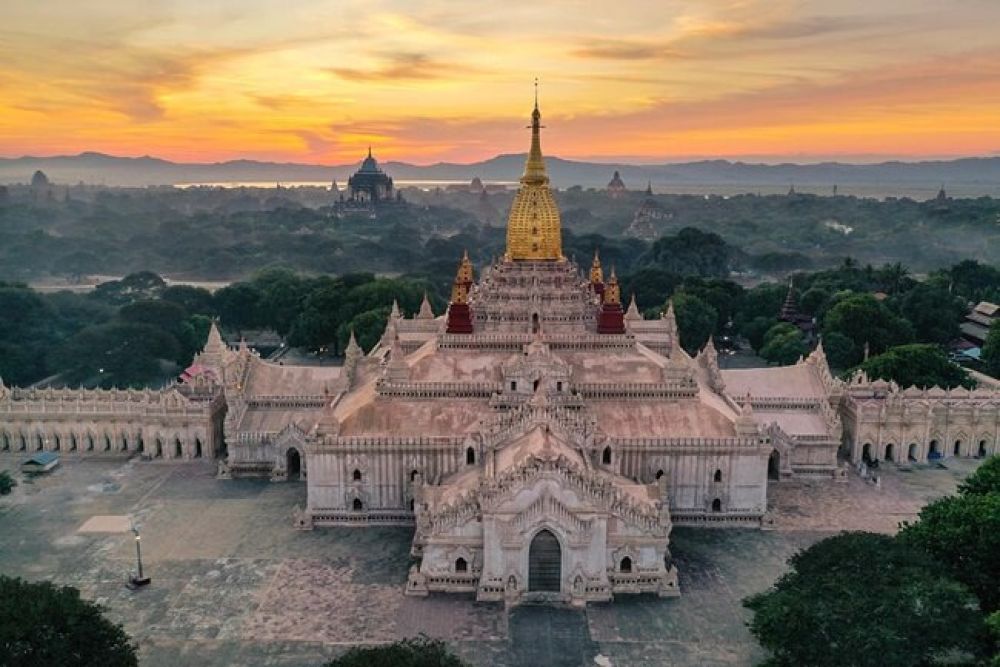

Located in the heart of the ancient city of Bagan, Myanmar, the Ananda Temple is one of the most revered and well-preserved temples in the region. Its history as a tourism destination is intrinsically tied to the history of Bagan itself, which has been a magnet for both pilgrims and curious travelers for centuries.
The Ananda Temple was built in the early 12th century under the reign of King Kyanzittha of the Pagan Dynasty. Its architectural finesse, with the fusion of Mon and Indian influences, represents the pinnacle of Burmese temple design. The temple is known for its gilded sikhara tower and the four massive Buddha images that face each of the cardinal directions. This aesthetic gem has long captured the attention of history enthusiasts and art connoisseurs.
The history of tourism in Bagan, and consequently at the Ananda Temple, parallels the development of Myanmar as a travel destination. Following Myanmar's independence in 1948 and the subsequent opening of its doors to the international community, the ancient city of Bagan slowly became accessible to a wider audience. The Ananda Temple's mystical allure and historical significance made it a cornerstone attraction for those visiting the region.
In July 2019, Bagan was officially inscribed as a UNESCO World Heritage Site, a recognition that increased global interest in the Ananda Temple and its surroundings. This recognition has been instrumental in placing the temple on the must-visit lists of travellers around the world.
Recent trends in tourism at Ananda Temple have seen a shift towards sustainable and responsible travel practices. Visitors are encouraged to respect the sacred nature of the site and to contribute to the preservation of this historical treasure. Efforts are being made to balance the growth in tourism with the conservation of Bagan's cultural heritage and the well-being of its local communities.
Today, the temple stands not only as a testament to the spiritual history of Myanmar but also as a beacon for an immersive cultural experience. Visitors can explore the temple grounds, marvel at the architectural details, participate in traditional festivals such as the Ananda Pagoda Festival, and engage with local guides who share captivating stories of the temple's past.
In conclusion, the Ananda Temple remains one of Myanmar's most cherished landmarks. Its journey as a tourism destination has mirrored the broader historical currents flowing through the region, and it continues to evolve as a place of discovery and reverence in the realm of global travel.